GREEN
GREEN
WUNWARREN
This means 'green' in Woi wurrung language
Can you imagine what a Green Moonee Valley looks like in 2040?
- We achieve zero net emissions for our community and reduce emissions from Council operations by 95 per cent by 2040
- We achieve 30 per cent canopy cover by 2040 through enhancing our urban forest
- We divert 90 per cent of household waste and waste from Council operations from landfill by 2040
- Our city achieves climate resilience through supporting the community and planning a built environment that adapts to a changing climate

Realising a Green Moonee Valley
These strategic directions, objectives and actions provide the framework to realise a Green Moonee Valley.
Across the globe there is a pressing need to reduce carbon emissions to avoid the worst impacts of climate change. We all have a part to play to achieve deep cuts to emissions. This requires a shared effort across residents, businesses, Council and other levels of government.
To play our part, we have a target to achieve zero net carbon emissions from Council operations by 2020, by a combination of reducing corporate carbon emissions and the purchase of carbon offsets.
We aim achieve zero net emissions for our community by 2040, we also have interim community emissions reduction targets of:
- 44 per cent below 2017 levels by 2025
- 67 – 70 per cent below 2017 levels by 2030
DID YOU KNOW?
- Transport and freight (40%) and residential buildings (30%) contribute to most of our carbon emissions.
- Council is on track to achieve zero net emissions in our operations by 2020.
The urban forest, including all the trees and vegetation in our city is critically important to both mental and physical health as these cool, green environments encourage people to recreate and socialise outdoors. As the climate changes and we experience hotter, drier and more extreme weather conditions, our community will be more impacted by heat stress and flood risk. A healthy urban forest is one of the most effective ways to mitigate urban heat island and improve health outcomes in the community.
Water is critical to creating much needed green, cool, and climate-adapted spaces in our city. In 2040, our city supports healthy natural environments, waterways and green spaces, while providing sustainable water supplies to meet our needs.
What does Council do?

DID YOU KNOW?
- Around 60% of our city is covered by roads, roofs and concrete.
- More than 2,000 mature trees are planted each year in streets and parks, along with an additional 1,000 indigenous trees and shrubs.
- We have 30 hectares of conservation areas, including pockets of remnant vegetation that have survived since European colonisation.
- Only 4% of rainwater landing on roofs in Moonee Valley is harvested and reused.
Australian households produce over 13 million tonnes of waste per year and in Moonee Valley we lead typical Australian, high consumption lifestyles. We cannot sustain this level of consumption and associated waste generation. We need to rethink our use of resources and consider the legacy we leave future generations. Over the coming decades this will require a major shift to see ourselves as stewards of our natural resources, rather than primarily consumers and producers of waste.
We need to consider the whole of life cycle of products and value durable, long-lasting materials. By first avoiding waste and increasing reuse, recycling and other forms of resource recovery, we can dramatically cut waste disposed to landfill.
Council acknowledges that the achievement of our aspirational target depends on developments in the waste industry that are outside Council’s control, such as improved resource recovery technologies and changes in the regulatory environment.
What does Council do?

DID YOU KNOW?
- On average, each household sends around 480 kilograms of waste to landfill and 220 kilograms of materials for recycling per year.
- Moonee Valley offers residents the ongoing opportunity to put food waste in their green lid bin. This is known as the Food Organics Garden Organics, or FOGO, bin.
As the climate changes, we expect to see more extreme weather, such as storms and floods, and generally hotter, drier conditions. This will place additional pressure on the community, impact Council assets and disrupt services. It will however, also present new opportunities, such as acting as a driver to create a cooler, more climate resilient city with a lower carbon footprint.
Climate change adaptation is about being better prepared and equipped to cope with the impacts of climate change. Adaptation planning involves improving the ability of Council’s services, our natural and built assets, and our community to be resilient to the impacts of climate change.
What does Council do?

DID YOU KNOW?
- Our city has around only 9.5 to 11% tree canopy cover.
- Many of our 50,000 street trees are vulnerable to the changing climate due to their lack of diversity.

